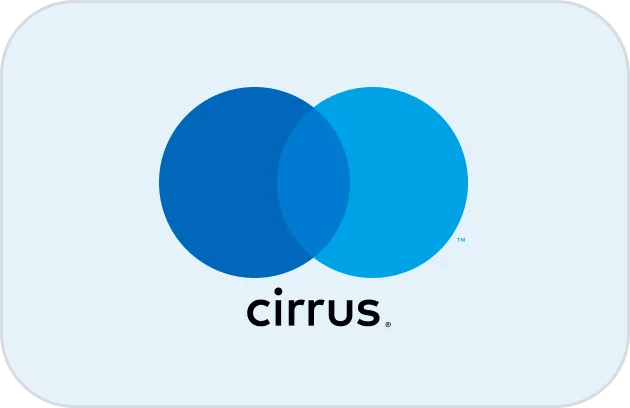UAE contact centers don’t just need “cloud phones” anymore. They need platforms that can switch from Arabic to English in a single sentence, route VIP customers from Dubai Marina faster than price shoppers in Sharjah, and keep every recording compliant with TRA rules and global privacy standards. The best call center software in the UAE for 2025 is built for Arabic IVR, AI routing, and remote-ready operations across time zones—without forcing you to bolt together five different tools.
1) What “Best Call Center Software in UAE” Actually Means in 2025
In 2025, UAE buyers aren’t asking “Does it have call recording?” anymore—they assume it. The real question is: Can this platform keep up with high-volume GCC traffic while speaking the customer’s language? That means native or high-quality Arabic IVR prompts, right-to-left script support in dashboards, and routing rules that understand local working hours, Fridays off, and regional public holidays.
The strongest platforms now combine omnichannel call center software with auto dialers, AI agent assist, and integrated VoIP. Instead of separate systems for inbound, outbound, and WhatsApp, you get one brain handling all channels, with consistent reporting. This is the only way to keep SLAs stable when campaigns spike or when a single TikTok post sends thousands of customers into your queues overnight.
Because UAE teams often support customers in KSA, Kuwait, Bahrain, and beyond, capacity must stretch smoothly. Platforms built like this already power remote teams across regions, just like the global implementations described in AI-ready contact centers in the US market. The UAE can’t afford anything less.
2) Non-Negotiable Capabilities for UAE Contact Centers
Arabic IVR and dual-language flows are the first filter. Your welcome prompts, menu options, and compliance statements must be crystal clear in Arabic and English. Great software lets you A/B test scripts, upload professional recordings, and manage different IVRs per DID (for Dubai vs. Abu Dhabi vs. KSA numbers) without breaking reporting.
Next is GCC-aware routing logic. Schedules must match on-the-ground reality: Ramadan hours, UAE public holidays, and different weekend patterns across the region. Rules should be as granular as “if the caller is from Riyadh VIP segment and time is after 7PM KSA, send to remote night-shift pod.” This is the same intent- and value-based routing philosophy covered in predictive routing at scale, tuned to the GCC context.
Finally, the platform has to be remote-friendly by design. With UAE attracting global talent and BPO partners in Egypt, Pakistan, and the Philippines, the software must support WebRTC softphones, low-latency media paths, and regional failover edges. Architectures similar to those powering remote-first UK operations become the de-facto standard when your team is spread across three continents.
3) Architecture: How a UAE-Ready Stack Should Look
Think of your setup as one stack: Dubai VoIP edges + global cloud PBX + AI routing + auto dialer. Calls should hit regional carriers, land on a geo-aware SIP edge, and then flow into your cloud PBX and routing engine. This is why many UAE teams look for platforms that mirror the global nervous system outlined in cloud PBX and VoIP system designs.
The same stack must support outbound: predictive, progressive, and preview dialing for sales and collections teams. Features proven in markets like India and the US—such as the revenue-focused designs in high-ROI dialer architectures and compliant U.S. outbound engines—translate extremely well into UAE campaigns for solar, financial services, and real estate.
On top of that, AI services should sit as a layer, not a bolt-on: real-time transcription, sentiment, next-best-action coaching, and call scoring. When this is wired correctly, the same events feed your QA and reporting models, similar to the 100%-coverage audit patterns described in AI-first QA frameworks. You don’t just log calls; you turn every conversation into structured data you can act on.
4) Feature Matrix: How to Evaluate Call Center Platforms for UAE
Use the matrix below as a practical scorecard. It focuses on what actually matters for UAE operations: Arabic support, regional compliance, AI depth, and reliability. Score your current vendor and any alternatives against it; anything scoring weakly in more than a few rows is a risk.
| Capability | What “Good” Looks Like | How to Test It |
|---|---|---|
| Arabic + English IVR | Native support, per-number trees, easy script edits | Build dual-language menus and switch flows by caller region. |
| Arabic screen & SMS support | Right-to-left layout, Unicode-safe, WhatsApp-ready | Send test SMS in Arabic; verify character handling and layout. |
| AI intent detection | Understands mixed Arabic/English utterances | Feed real call recordings; check routing accuracy per intent. |
| Predictive routing | Routes by value, language, skills, and backlog | Simulate VIP vs. standard callers; compare handle time and CSAT. |
| Auto dialer modes | Predictive, progressive, preview, manual | Run a test campaign; verify abandonment and connect rates. |
| Call recording & storage | Encrypted at rest, region-aware retention controls | Pull random samples, check download speed and redaction options. |
| Real-time AI coaching | In-call tips, objection handling, compliance prompts | Shadow live calls; track impact on AHT and conversion. |
| AI call scoring | Automatic QA with human calibration | Compare AI scores with supervisor reviews for 50 calls. |
| WhatsApp & digital channels | Unified with voice in one conversation record | Switch from WhatsApp to voice mid-case without re-auth. |
| WebRTC softphone | Works on low-bandwidth home internet | Run calls from different ISPs and countries; monitor jitter. |
| Geo-distributed media edges | MENA + global PoPs, carrier diversity | Measure MOS scores from Dubai, Riyadh, Cairo, and Karachi. |
| Failover & uptime | Published 99.99% SLA, active-active design | Ask for real incident history and mean-time-to-recover. |
| Compliance & audit logs | Immutable, exportable, per-action detail | Run an access review and export logs for auditors. |
| CRM & ticketing integrations | Click-to-call, screen-pop, single timeline | Test a full journey from lead to closed ticket. |
| Analytics & dashboards | Intraday, cohort, and executive views | Reconcile metrics against those in benchmark-style reporting. |
| Arabic knowledge base | Localised articles, scripts, and bots | Check search accuracy for common Arabic queries. |
| Role-based access control | Granular roles for teams and regions | Ensure outsourcers can’t see restricted customer data. |
| Outbound compliance | Time-zone rules, opt-out handling, pacing guardrails | Review how the system stops over-dialling or wrong hours. |
| Self-service admin | Routing and IVR edits without vendor tickets | Ask supervisors to create new skills and queues live. |
| Onboarding & training | Guided flows, sandbox, Arabic/English materials | Measure how fast new agents take their first live call. |
| Pricing transparency | Clear per-seat + usage model, no hidden carrier fees | Model seasonal peaks; confirm total cost with finance. |
5) Daily Operations: How UAE Teams Use AI Routing & Analytics
Once the platform is live, the best call centers in the UAE run on tight cadences. Team leads watch intraday dashboards for ASA, abandon, and live adherence, while operations owners watch intent-level backlogs. When a Dubai real-estate campaign spikes or a telecom outage hits Sharjah, they change routing and capacity allocation in minutes—not next week.
AI routing shines in mixed-language scenarios. When customers start the IVR in Arabic but switch to English with agents, the system tags language preference, sentiment, and value in real time. This is the same kind of “conversation graph” approach that allows omnichannel platforms to prevent customer loss by preserving context across channels. Consistency is what keeps CSAT high even when handle times fluctuate.
Outbound teams lean on the auto dialer to protect agent time. Debt collection, subscription renewals, and lead follow-up all run on carefully tuned pacing rules, similar to the strategies documented in high-conversion predictive dialing playbooks. UAE sales floors simply adapt those ladders to DNC expectations and local calling windows.
6) Migration & Expansion: 90-Day Plan for a UAE-Ready Platform
Moving a live operation is risky, but not moving is riskier. Legacy PBX stacks and stitched-together dialers resemble the systems described in global PBX migration stories: fragile, hard to report on, and expensive to scale. A structured 90-day plan de-risks the shift.
Days 1–30 focus on architecture and pilots. Stand up voice, IVR, and softphones in parallel with your existing provider. Mirror real traffic from one small queue (e.g., a UAE support line) and verify uptime, call quality, and routing behaviour. This is also when you model global DID strategy and decide how numbers in KSA, Oman, or Egypt will land on your UAE stack, similar to the global patterns in multi-office VoIP deployments.
Days 31–60 layer in AI and outbound. Turn on real-time coaching, start AI scoring for a subset of calls, and move 1–2 outbound campaigns to the new auto dialer. Document playbooks for solar, fintech, or education verticals, leaning on the same kind of optimisation thinking used in high-performance auto dialer comparisons. Your goal here is proof: higher connect rates, faster ramping agents, and more consistent QA.
Days 61–90 complete the migration. Port numbers, retire the old PBX, and move all inbound queues. At this stage, your focus shifts to business metrics—revenue per contact, churn saves, and IT cost reductions—echoing the outcomes-focused approach seen in cost-cutting PBX configurations. Once those numbers stabilize, you can safely expand to new markets without revisiting the core architecture.
Throughout the process, keep legal and compliance teams involved. When your AI stack is deeply integrated with call recording and routing, it’s easier to maintain consistent consent, disclosure, and recording behaviours across all GCC regions.
7) FAQs — UAE Call Center Software, Arabic IVR & AI Routing
1) Why does Arabic IVR matter so much for UAE contact centers?
Arabic-first IVR isn’t just about language preference; it directly impacts containment and customer trust. When customers hear clear, culturally aligned prompts, they choose the right options faster and are less likely to abandon. Dual-language flows also reduce misroutes, because you can separate “Arabic care,” “English technical,” and “GCC VIP” options without forcing agents to juggle everything. Over time, IVR analytics show which paths work and which need script or routing changes.
2) How should UAE companies compare different call center platforms?
Start with the matrix above and insist on live demos using your own scenarios. Test Arabic IVR, WhatsApp flows, and routing for GCC time zones. Then run a proof-of-concept with real agents for two to four weeks. Measure ASA, abandon, first-contact resolution, and revenue per contact against your current baseline, taking inspiration from how other regions structure their evaluations in resources like ROI-based feature rankings. If a vendor won’t give you data and live usage, they’re not ready.
3) Can UAE contact centers safely use AI for QA and coaching?
Yes—provided AI is treated as an assistant, not an unchecked authority. The safest setups follow patterns similar to those in AI coaching frameworks: AI generates scores, summaries, and coaching prompts, but supervisors calibrate regularly and override where needed. You should be able to show regulators and clients exactly how models work, which data they see, and how long recordings and transcripts are stored.
4) How does UAE regulation affect call recording and outbound campaigns?
UAE regulations emphasise consent, data security, and fair treatment. Your platform should support opt-in disclosures in Arabic and English, encrypted storage, role-based access, and configurable retention rules. For outbound, adopt best practices similar to those used in strict compliance markets: honour DNC lists, respect time windows, and cap daily attempts per customer. The tech should enforce these guardrails automatically so agents don’t have to remember every rule.
5) What’s the best way to support remote agents outside the UAE?
Choose a platform with regional VoIP edges, WebRTC softphones, and centralised monitoring. This lets you place agents in lower-cost regions while keeping call quality high, similar to the designs powering reliability-focused deployments. Give remote agents clear hardware guidelines, test their networks, and monitor MOS scores and packet loss. When network health is visible, you can fix issues before customers feel them.
6) How do we future-proof our UAE contact center for the next 3–5 years?
Future-proofing means building on a platform that treats AI, omnichannel, and reliability as first-class citizens. Look for architectures similar to those driving SIP-to-AI telephony transformations: cloud-native, event-driven, with open integrations and exportable data. That way, as regulations evolve and new channels appear, you can plug them into the same conversation graph instead of starting over.
When you combine Arabic-first IVR, AI routing, and a resilient VoIP backbone, your UAE contact center moves from “keeping up with tickets” to owning customer experience across the GCC. That’s what the best call center software in the UAE should deliver in 2025—and it’s the standard you should hold every vendor to.








